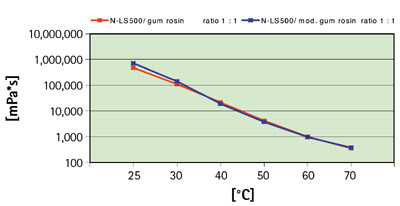
Throughout the 1990s, many corporations implemented enterprise resource planning (ERP) application software. These software packages automated key business processes, allowed users to share common data and provided connectivity with a common user interface. ERP systems automated many time-consuming, labor-intensive manual processes, reducing the time and costs associated with these activities. Automation of departmental processes not only improved efficiency but also improved the accuracy of the information.
As companies implemented ERP, they experienced significant problems, including incompatibility of business-process models, translating and transferring company data, staff training, process changes, and changes in management. The limitations of early ERP implementations were apparent and motivated corporations to move toward aligning and optimizing business processes.
Aligning and Optimizing Processes
The new focus is on aligning and optimizing interdepartmental processes and cross-organizational effectiveness. This is typically composed of three parts - analysis/optimization, enterprise application integration and niche functionality that expands the scope of ERP functionality. A recent example of this new focus has prompted Rohm and Haas, Philadelphia, to put in a corporate-wide system that links everyone together, giving transparency of information and driving more consistent business processes across the company's different business groups.1Advancements in hardware and middleware technologies have enabled worldwide connectivity of ERP systems. This has been critical for the chemical industry with its large number of acquisitions and consolidations. Much greater value is derived through the ability to make better business decisions and deploy business processes that benefit the entire corporation, not just a single department or function. To be successful with this alignment and optimization of business processes, corporations need to obtain excellence in interdepartmental processes, let effective and efficient business processes drive the software-application selection, and leverage existing application software. To this last point, three out of four large companies keep information on two or more applications. The conventional benefits of such an implementation yield cost savings from productivity gains in back-office functions, reductions in inventory, decreases in cycle time and service-level improvements. An example of this in the adhesives industry is Sika's (Lyndhurst, N.J.) corporate conversion to SAP R/3, which is the standard for the chemical industry for enterprise-wide ERP packages.
Customer Self-Service
With the emergence of Internet business applications and electronic data interchange (EDI), corporations began to explore the use of technology for automating business processes between companies. Adhesives suppliers to the automotive industry have been forced to be early adopters of EDI. This inter-enterprise focus on e-commerce was initially about automating processes and reducing costs. One of the best examples of this is the concept of "customer self-service." This enabled ordering and other transactions via the Web and is one of the best ways of opening ERP systems to extended users.Customer self-service has been found to increase transaction accuracy, reduce configuration and expand service hours to 24 hours a day, seven days a week (24/7). "There is enormous growth in demand among our customers for Web-based services and support," said Philip M. Neal, chairman and chief executive officer of Avery Dennison, Pasadena, Calif. Through the www.fasson.com Web site, Avery Dennison customers can select products, confirm price quotes, place orders, track shipments and complete a number of other activities.2 This opening of IT systems beyond the corporate boundaries is the key to the company's goal to leverage the previous investments in ERP.

ERP Extension Products
The greatest potential for dramatic return on investment (ROI) is attained by supplementing and enhancing ERP solutions with integrated extenders such as supply-chain management (SCM), advanced planning and scheduling (APS), business intelligence (BI), customer-relationship management (CRM) and e-business capabilities. There has been a proliferation of successful ERP extension products, which is proof that ERP alone cannot solve all of an organization's complex requirements.A recent example of this proliferation is Stratyc, a new spin-off business of H.B. Fuller, St. Paul, Minn. Stratyc's browser-based products and services are available in modules to work with existing resources, so customers can subscribe to as much or as little as they need. Modules are designed to integrate supply-chain management, online procurement, quoting, ordering, fulfillment and reporting.3 (See ASI's April 2001 issue, page 24, for more information on Stratyc.)
Business-Information Architecture Critical
To effectively plan these moves, a business must design a business-information architecture. This is the way information systems enable business processes and how an organization executes its strategies. This architecture helps the company to define the current state of the systems and plan for the desired future state of the systems. Like many other types of architectures, the foundation is critical, as represented in Figure 1.The business strategy for the future (e-business), involves the pursuit of customer service and collaboration with trading partners. Companies need to manage the total supply chain and extend information technology outside the company boundaries to trading partners. Supply-chain solutions interact with the ERP system to extract base information. This information is enhanced and remitted to trading partners. Often the same type of information is supplied from trading partners (Figure 2).
An interconnected or integrated transaction layer such as ERP inside each company is critical. If information is to flow seamlessly from Company A to Company B to Company C and back to Company A again, the network must build the necessary foundation. Any company that has a disconnected internal system will quickly become a bottleneck in the flow. The Internet-based system-to-system connections (also known as enterprise-to-enterprise integration) address some of the requirements of an e-business. They provide deep connections that support collaborative work, complex document exchange and inter-company processes.
However, these custom-developed connections are expensive, take time to set up and are difficult to scale. This highlights the importance of having standard protocols in place. Standards bodies, such as CIDX, are developing these protocols for the chemical industry. Chemical Industry Data Exchange (CIDX) has developed a broad set of nonproprietary, eXtensible Markup Language (XML) standards to facilitate business-to-business data exchange across the chemical industry worldwide. The initiative focuses on logistics, invoicing, forecasting, exchange and multinational interactions. As a result of these efforts, over 700 data elements have been defined and 47 new transactions can be conducted using the standards. More than 1,000 pages of standards documentation containing technical and implementation information have been created.4
Executing Business Strategy
The networked enterprise model (Figure 3) demonstrates the relationship between companies, their supply chains and customers; between ERP solutions and their extensions; and between business value and enabling technology. Executing business strategy and exceeding ROI opportunities in the ERP/e-business environment is a complex process that involves more than the purchase of software and hardware. The process starts with a solid methodology, business redesign and product training. It requires the selection of a hardware platform; complementary software products; middleware; network peripherals; intranet, extranet and Internet connectivity; and substantial third-party support. The entire process is further complicated by the resulting e-business transformation and relationship with multiple suppliers. The networked enterprise model provides a framework for understanding the e-business transformation that results from the integration of ERP solutions and extensions.B2B Marketplaces
There is a tremendous amount of pressure on executives to actually make e-business technology work. It impacts the economic models on the cost side, revenues and the return on assets. There are several ways to get started and many new suppliers who can help companies to get connected. The first wave was the exchange-based business model started over two years ago by ChemConnect and CheMatch. In September 2000, SealantSource.com, a business unit of General Electric Co., was formed as an Internet-based business-to-business marketplace where buyers, specifiers and engineers can research a wide selection of sealants and adhesives, and purchase materials from a select group of leading manufacturers. SealantSource.com delivers powerful, Web-based research tools and the convenience of 24/7 online purchasing.Participation in these organizations takes careful consideration regarding your go-to-market strategy. In many cases, the exchanges provide a new channel for your products. "Sealantsource.com provides us with another outlet through which we can effectively reach segments of our customer base," said Al Stroucken, H.B. Fuller Co. chairman, president and CEO.5
Last year, Envera and Elemica were developed. These consortia, backed by the chemical industry, are providers of e-business solutions that improve supply-chain communications. There has also been rapid growth of marketplace service providers who offer off-the-shelf solutions that allow companies to create private-trading networks with their business partners. Since approximately 80 percent of chemical purchases are based on pre-negotiated, long-term contracts, private marketplaces are becoming the main focus for chemical manufacturers who want to improve their competitiveness and responsiveness using Internet-based commerce.
"A significant percentage of our distributors use Prophet 21 enterprise solutions," said Kevin Boyle, director, Industrial Distribution, Loctite, Rocky Hill, Conn. "Loctite expects to achieve a major return on investment via better customer service and increased electronic-commerce efficiencies. We are counting on Prophet 21 to enable our distributors to streamline transactional efficiencies by conducting EDI and XML commerce transactions via the Trading Partner Connect marketplace."
To truly transform an organization and its trading partners (to succeed as an e-business), it is necessary to engage the people and leverage the knowledge that resides there. The company's employees are the keys to creating sustainable transformation. A transformation effort that leverages the people and the knowledge within a company is far more stable and likely to succeed. The process of e-business transformation involves the progression through the four milestones of integration, alignment and optimization, e-commerce, and e-business. The key to succeeding as an e-business is to continually align the drivers of people, process, knowledge and technology through the milestones.
References
1. Knox, Peter. Knox Research, E-Transformation: More Than Just a Good Idea, ePlantnow.com.2. Avery Dennison Corp. press release, September 12, 2000.
3. H.B. Fuller Co. press release, October 31, 2000.
4. CIDX press release, January 29, 2001.
5. Sealantsource.com press release, September 12, 2000
6. Loctite Corp. press release, November 16, 2000.
This paper was based on ERP and Beyond, Exceeding ROI Opportunitiesc 1999 Benchmarking Partners, Inc., and IBM Corp.; and Beyond ERP, Collaboration and Value Networksc 2000 Benchmarking Partners, Inc., and IBM Corp. It was presented at the Spring 2001 ASC Convention and Exposition in Orlando, Fla.